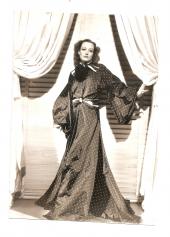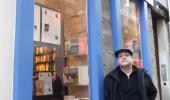'Science Fair' doc is an exhilarating ode to teens at their brainy best
Do you remember Paul Zindel’s “The Effect of Gamma Rays on Man-in-the-Moon Marigolds”? It was a beautiful, Pulitzer Prize-winning play (and later, film) about a troubled girl whose lifeboat out of a troubled environment is her high school science fair project.
“Science Fair” is a National Geographic documentary chronicle of the real thing — an “ode to the teenage science geeks on whom our future depends” at the International Science and Engineering Fair (ISEF), where 1,700 of the brightest, quirkiest teens from 78 countries compete in 22 categories to change their own lives — and the world —through science.
Co-directors Cristina Costantini and Darren Foster focus on nine of them, some from elite “powerhouse” high school science programs, others from underdog schools with little or no institutional support. Their agonies and ecstasies are equally fascinating, among them:
• At Louisville’s duPont Manual — Kentucky’s top science high school — seniors Ryan, Harsha and Abraham have combined their talents to create a 3D-printable stethoscope connected to an online database of heart sounds, letting doctors diagnose heart abnormalities far more accurately.
- Starring: Sally Hawkins, Octavia Spencer, Richard Jenkins.
- Rating: PG for some thematic elements and brief language.
• Kashfia Rahman, a quiet Muslim girl at sports-obsessed Brookings High School in South Dakota, can’t find a teacher to be her project adviser but enlists a sympathetic football coach to mentor her cutting-edge use of brain waves in drug-alcohol-problematic adolescents to find the disconnect between risk taking and risk propensity. “I have to look extra friendly and unharmful at Walmart’s,” says Kashfia, wants to go to a college where she’ll be judged for her intellect rather than her hijab.
• Best buds Myllena and Gabriel are research partners from a tiny town in one of the poorest states in Brazil. When the deadly Zika virus and hydrocephaly invaded their hometown, they headed for a laboratory and ultimately identified a new protein/medication to inhibit Zika’s spread.
• Robbie Barrat is a math genius from the wonderfully named Shenandoah Junction, West Virginia. He has a taste for Hawaiian shirts and mischievous “modding” — programming his calculator to generate Shakespearean insults (“Thou art an unwashed puttock!”) — while nearly flunking algebra. More important, he builds new computers from scavenged parts and writes algorithms on numbers theory and “machine creativity.” Can machines generate original content? Can a win at ISEF offset his bad grades and get him into a good college? He’s been rejected by all 12 he’s applied to, so far.
• Ivo Zell, an endearingly awkward German boy who lives on the banks of the Rhine, tapped into his childhood obsession to unearth a century-old, single-wing airplane design that was rejected by aeronautics engineers at the time. Ivo redesigned the aircraft to make it more stable and efficient.
The sole non-student focus of the doc is Serena McCalla, Ph.D., the science research teacher at Jericho High School in Long Island. She’s a charismatic force, with an in-your-face style, who transforms her students — many of whom speak English as a second language — into some of the world’s best science fair competitors. Not least of the challenges is getting their fantastic projects across to judges. (Just understanding the titles is often difficult, e.g., “A New Method of Synthesis of 1,1 Fluoronitroalkenes by Radical Substitution in Fluorobromostyrenes”). They have 10 minutes to make their case.
Co-director Costantini recalls seeing “Spellbound,” the epic spelling bee doc, and wanting to do something similar for the subculture that saved her, “a dweeby Wisconsin kid,” who skipped her junior prom to compete at science fair. “ISEF became my lifeboat, validated my passion for science, but most important, it’s where I found my tribe,” the director said.
It’s the most exhilarating but stressful experience any adolescent can endure — kids fainting, throwing up, one needs a sleep mask, one has mono.
And during filming, many of the central characters — scientists, women, Muslims, immigrants — found themselves at the center of an ugly national political debate. How to incorporate those issues into the doc? With sound bites of Donald Trump calling climate change a Chinese hoax? With talking heads lamenting science under attack?
“Science Fair’s” co-directors wisely decided to trust their audience to know the backdrop and to let the issues come through naturally.
But we can’t help noting that the only thing worse than science deniers are science defunders: Oklahoma, for example, has recently cut its longtime science fair entirely from the state budget.
Oklahomans, Pennsylvanians and all Americans need to see “Science Fair.”
(Opening today at the Carnegie Science Center.)
Post-Gazette film critic emeritus Barry Paris can be reached at parispg48@aol.com.






